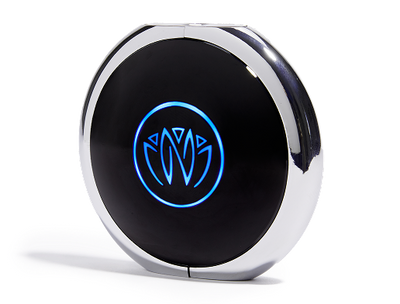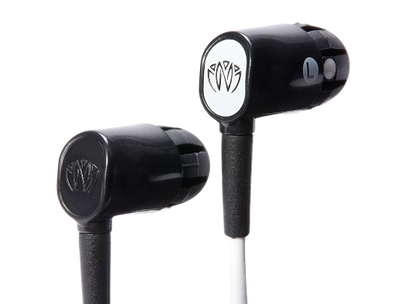Take a moment and close your eyes. Imagine a long ribbon wrapped around your head with two threads hanging down. The threads flank down your neck on the right and left side. One thread twists down touching your throat, past the heart, and stops at your belly button. The other thread wanders down the neck and connects to the stomach. That ribbon is called your vagus nerve, the largest, and some experts say, the most important nerve in your body.
The vagus nerve is an intricate network of ganglia that begins in the brainstem. Literally, the nerve comes right out of the brain stem and travels through the esophagus, into the chest, the heart, and stomach organs then back up the chest, through the throat and into the brainstem. Has anyone ever told you to “trust your gut?” What they’re actually telling you to do is “trust the vagus nerve.” It’s the main source of communication between your brain and your stomach, sending and receiving important parasympathetic information for the autonomic nervous system.
Cranial nerves are pathways that extend from the central nervous system (CNS), connecting the brain to the major systems governing our bodies. The vagus nerve is the 10th cranial nerve out of 12. The name comes from the Latin word, “vagor,” it means, “to wander.” It was given this name because of the great mystery behind the massive nerve. It is nearly impossible to completely track, branching and splintering throughout the human torso.
There is very little information we know about the vagus nerve, but the information we do have may be the key to well being and improved health.
Clinical research shows that stimulation to the vagus nerve has positive effects to medical conditions affected by stress, such as:
- Depression
- Inflammatory bowel disease
- Epilepsy
- Migraines
- Arthritis
- PTSD
- ADHD
What is the Vagus Nerve?
The medulla oblongata is centered in the brainstem, which uses the vagus nerve to supply a vast network of organs in the head, neck, chest, and abdomen. The medulla is the respiratory control center, it sends signals to the diaphragm, larynx, and pharynx which are the muscles for respiration.
Breathe deep, and exhale. The sense of calm and composure is your parasympathetic nervous system (PNS) at work. The PNS is one half of the Autonomic Nervous System (ANS), the other half is the Sympathetic Nervous System (SNS). They work in opposition.
In moments of severe sudden stress, the SNS kicks in stimulating adrenal glands to release hormones, this is the “fight-or-flight” mechanism. This increases the rate of your heartbeat, breathing, and blood pressure; which is great if you are in a sticky situation. The PNS works in the opposite way. It is known more as the “chill-out” mechanism, which releases hormones like cortisol that slow the heart rate, control respiratory rates, and cause a feeling of calm and tranquility. That’s why when you're upset you should breathe. Take deep breaths. Stimulate the vagus nerve to release those good feelings.
What Does the Vagus Nerve Control?
| Digestion | The Vagus nerve connects the brain to the gastrointestinal tract, and many of the stomach organs. Its job is to send and receive parasympathetic information between the brain and the stomach. When you are full, you feel tired. This is the “digest and rest” response which is communicated by vagal activity. |
| Heart rate | The medulla oblongata is the center of respiratory impulse in the brain. The vagus nerve is the communication line between the heart and the medulla , controlling heart rate and other autonomic functions. |
| Respiratory | The diaphragm, larynx, and pharynx are stimulated by the medulla oblongata. These are the cardiac and respiratory functions of the vagal response system. |
Vagus Nerve Stimulation
Dr. Gerard Rogler of the University Hospital Zurich claims, “vagus nerve stimulation is a medical treatment that is routinely used in the treatment of epilepsy and other neurological conditions.” He speaks of an open study conducted by Dr. Harold Sakheim from the New York State Psychiatric Institute testing the application of VNS on participants who show clinical depressive disorder. As a prerequisite subjects display aversions to medications and traditional treatments. Of the 60 participants, 37% displayed significant improvement. As of today the FDA has approved Vagus stimulation as a treatment for severe depression.
Rogler goes on to say, “VNS studies are not just clinically, but also scientifically, informative regarding the role of the vagus nerve in health and disease.”
Besides invasive surgeries to implant electrodes, there are several ways to induce the biochemical and bioelectrical responses that are otherwise controlled by the vagus nerve.
-
Breathing
- Deep breathing focused on the diaphragm. In through the nose and out through the mouth.
- Breathing from the belly increases blood flow to the gut, stimulating the vagus nerve and activating the parasympathetic nervous system.
-
Exercise
- Among the litany of health benefits, regular strength and cardiovascular exercise stimulates the vagus nerve promoting mental health and improved digestion.
- Yoga
- Positive relationships
- Massage
Recent studies have shown that stimulating vagal activity can improve mood, sleep, digestive health, and strengthen the immune system.
In the early days of VNS testing there was only one way of delivering the electronic stimulus to the vagus nerve. An invasive procedure placing a surgically implanted electronic device under the skin. A thin wire was then threaded from the device and connected to the left vagus nerve. When the device is triggered it sends a signal along the nerve to the brainstem, which then sends signals to specific areas of the brain.
Recently, there have been advances in VNS by attaching clips to the ear and delivering electronic impulses. A new product released in 2020 uses the technology of sending electric impulses to the vagus nerve while relaxing, and listening to music.
Xen by Nuevana is a wellness product that can elevate your mood, improve sleep, enhance focus, and reduce stress by gently stimulating your vagus nerve. Xen’s headphones attach to Xen, a compact device that connects with smartphones and tablets to deliver a soothing signal to your vagus nerve as you listen to your favorite music. Xen connects with all major music streaming services like Apple Music, Spotify, and Pandora.
As knowledge of the human body grows alongside the advancement of technology, humans have additional resources now more than ever to take control of their physiology. Never before have we known so much, yet still have more to find. The more information discovered about the vagus nerve can mean finding ways to help manage pains, inflammation, and sadness, and hold the key to well being.






